Uncategorized
HID SHOWCASES THEIR LATEST INNOVATION AT GITEX GLOBAL 2025
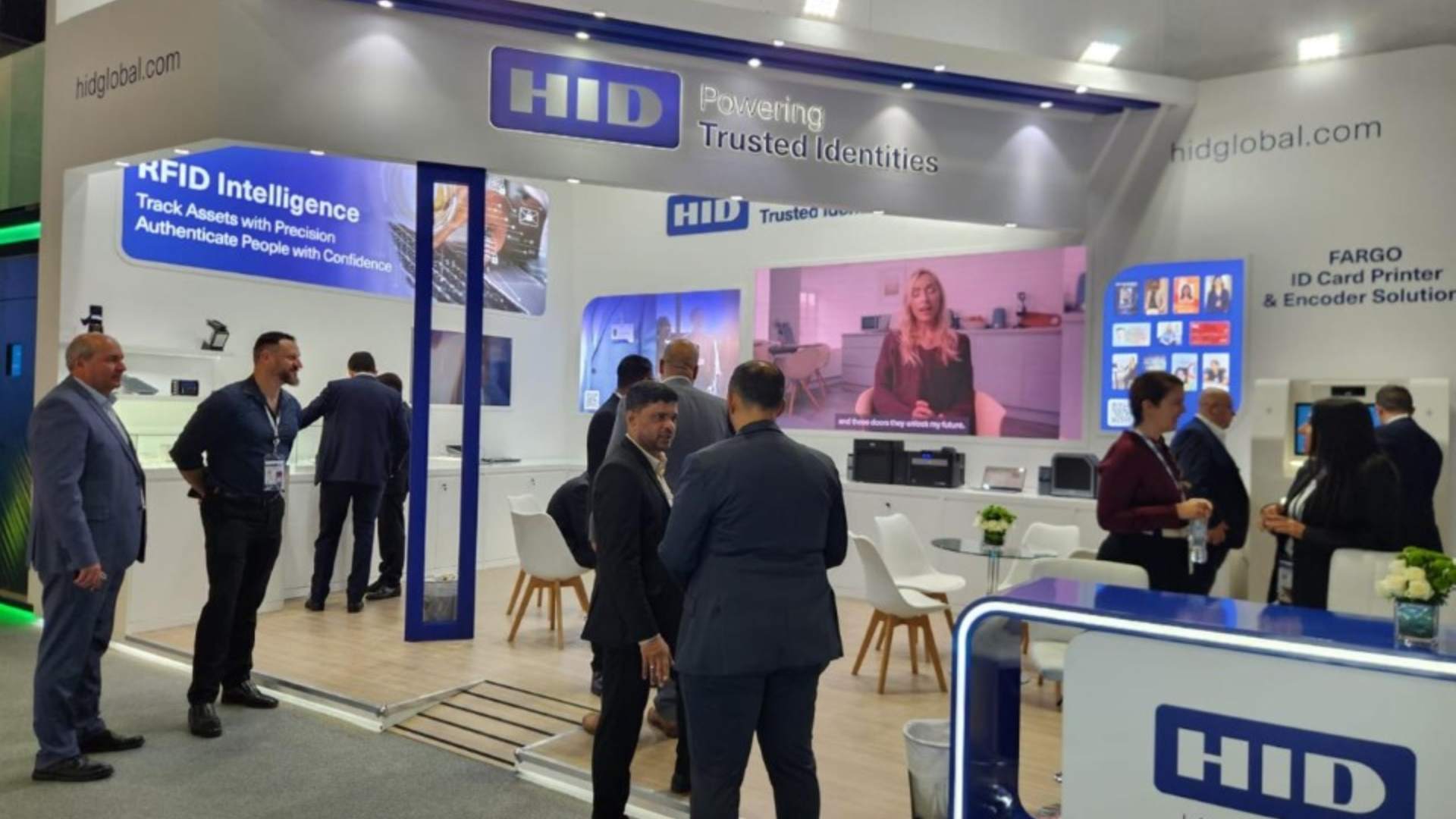
Exclusive Interview with Steve Swenson – Senior Director, Product and Marketing, Secure Issuance, HID FARGO
What are the key innovations HID is showcasing this year at GITEX Global, and how do they reflect the company’s vision for a better, more secure, and connected digital ecosystem?
Okay, sure, great question. So here at the show today, we’re showcasing a line of HID FARGO printers. FARGO is a strong and storied brand for HID in the desktop issuance space. We are specifically showing our full line of retransfer and DTC printers. One printer in particular that we’re showcasing is our new HDP5000e, which is a refresh of a long and storied product for the Fargo brand.
The HDP5000e has a number of important updates to strengthen overall performance, improve output and processing power, and reinforce reliability ensuring the product can stand up to the rigor of our customers’ needs. It also includes usability enhancements to streamline the issuance and card creation process, and strong end-to-end security with AES encryption and resin scramble technology to protect leftover data after cards are created.
We’re also talking about our HID FARGO Connect technology, which is a cloud-based software that allows organizations with complex issuance processes to remotely manage devices, create credentials from one location, and print them at another. This is particularly important for enterprise and healthcare customers with distributed operations.
It’s an exciting time for the HID FARGO business. We’re doing a lot to strengthen the product line and build on our reputation. You mentioned how this connects to HID’s broader vision when we look at issuance processes, they can be quite complex. Customers want high quality visual credentials with secure encoding and durability. Our strategy with the HID FARGO line is to create robust end-to-end solutions that streamline issuance and help organizations operate efficiently.
HID serves a wide range of sectors—from finance to hospitality to transportation. How do you tailor your solutions to meet the unique identity and access management needs of such diverse industries?
Great question. One of the most fundamental things we do as a business is to study and understand the different needs of those sectors. We create a range of solutions—high-end retransfer printers for speed, quality, and resolution, and DTC products for lighter applications. All of our products are modular, allowing customers to configure them according to their specific issuance and organizational requirements.
We complement that with high-quality consumables such as ribbons, overlaminates, and visual security features, as well as software for both desktop and cloud-based issuance. Another key part of our approach is our partner network. HID FARGO doesn’t sell directly to end customers because we understand that every customer has unique needs. Our partners work closely with end users to understand their requirements and collaborate with HID to deliver custom solutions. This combination of modular products, software, and local expertise ensures each customer gets exactly what they need.
In sectors such as hospitality and retail, convenience is key. How is HID leveraging digital identity, mobile access, and cloud-based issuance to create smoother and more secure guest experiences?
Great question. Going back to understanding the end user, we study every aspect of the issuance process. Creating an ID credential can be complex, so we focus on making it simple from setup to configuration. The HID FARGO business invests in strong out-of-box experiences, easy instructions, and partner support to help customers get up and running quickly.
For card design and creation, we provide intuitive software solutions, whether on premise or cloud based. For customers managing large fleets of printers, our cloud solutions allow them to monitor device status, print to multiple locations, and design credentials centrally. We also invest heavily in technical support both directly and through our partners to minimize downtime and quickly resolve any issues.
The Middle East is witnessing diverse growth in digital infrastructure and smart technologies. What is HID’s priority for its 2025 vision and beyond?
It goes back to what we just discussed bringing all these components together to help organizations create secure, durable, and visually robust credentials efficiently. Organizations don’t exist to create credentials, but they all need them to manage access and identity.
Our goal is to take the power of HID’s technology and turn it into simple, easy to understand, and customizable solutions for each user, supported by a strong partner network that provides a complete solution. If we can do that, we’re truly harnessing the full power of HID to meet the most important issuance needs of our customers.
Financial
EDB’s New Documentary Puts the Human Face on the UAE’s Economic Transformation
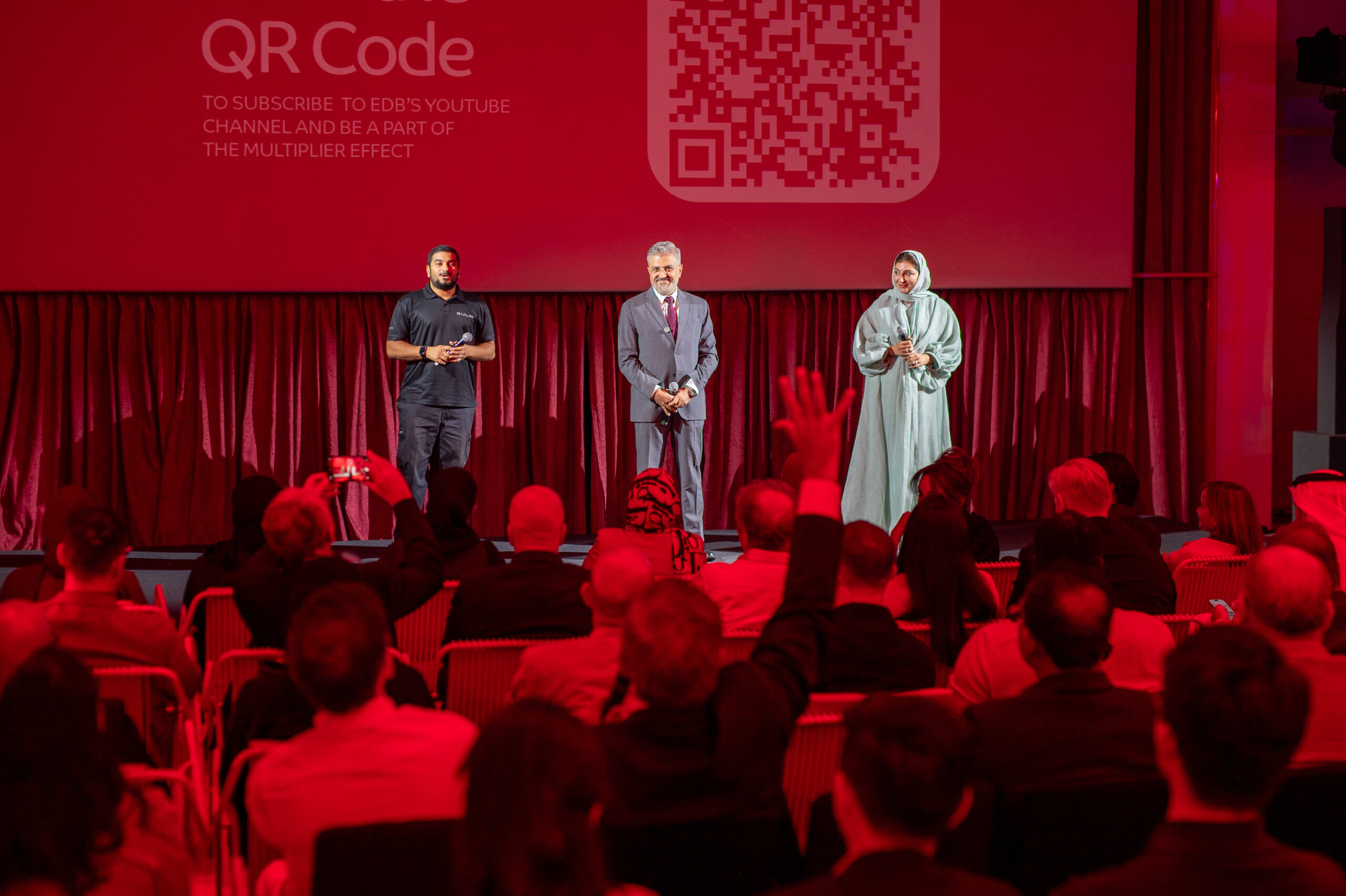
Emirates Development Bank (EDB), the UAE’s leading national development bank driving economic diversification and industrial growth, has premiered its groundbreaking documentary, The Multiplier Effect, at an exclusive VIP screening at Cinema Akil. The film marks a new chapter in financial storytelling, highlighting the inspiring human stories behind the nation’s economic transformation.
Developed in partnership with the Ministry of Industry and Advanced Technology (MoIAT)’s ‘Make it in the Emirates’ initiative and the Ministry of Economy and Tourism’s ‘Startup Capital of the World’ national initiative, the documentary offers an intimate look at how strategic support creates a ripple effect of progress across society. It follows the inspiring stories of three entrepreneurs who, with EDB’s support, have overcome immense personal and professional challenges to build businesses in the UAE. By showcasing these real journeys of resilience and innovation, the film aims to inspire the next generation of entrepreneurs to take bold steps in building the UAE’s entrepreneurial nation.
Through a partnership with STARZPLAY, the documentary will be streamed to audiences across the region, with its public launch set for December 2nd, a tribute to the UAE’s visionary leadership and national spirit.
The premiere was attended by representatives from the Ministry of Industry and Advanced Technology, the Ministry of Economy and Tourism, and other government partners, as well as senior executives from STARZPLAY, alongside EDB partners from the public and private sectors, entrepreneurs from the industrial ecosystem, and leading media representatives.
H.E. Ahmed Mohamed Al Naqbi, Chief Executive Officer of Emirates Development Bank, said: “The Multiplier Effect highlights the people and ideas driving the UAE’s economic transformation. At EDB, our mission is straightforward: when we finance growth, the nation grows. Every business we support contributes to jobs, innovation, and long-term value for the country. This film shows that impact clearly. By backing ambitious founders and working closely with our government and partners, we are strengthening the foundations of a diversified and future-ready economy.”
As the UAE’s national development bank, EDB plays a critical role in advancing the country’s economic diversification agenda and supporting the National Strategy for Industry and Advanced Technology. The documentary highlights how EDB’s support and financing in priority sectors, including advanced technology, food security, and healthcare, is creating a powerful multiplier effect that drives economic growth, job creation, and self-sufficiency.
H.E. Abdulaziz Al-Nuaimi, Assistant Undersecretary for Entrepreneurship and the Economic Affairs Regulatory Sector, Ministry of Economy and Tourism, said: “The UAE’s vision for economic development is fundamentally people-centric. We measure success not only by outputs, but also by the human spirit and resilience — the founders who take risks, innovate, and shape new industries. This same vision lies at the core of the ‘Startup Capital of the World’ campaign. It is not just about numbers or rankings; it is primarily about fostering a culture where entrepreneurship becomes a natural and celebrated path for the UAE’s youth. When government, financial institutions, investors, and industry work seamlessly together, entrepreneurs gain the confidence to take bold steps. The stories featured in this film show exactly what that ecosystem makes possible, and how it inspires many more to contribute to a diversified, future-ready economy.”
The documentary features:
- Rashid Al Sulmi, the founder of SULMI, who risked his family’s legacy to build the UAE’s first electric motorbike from scratch in his garage. SULMI is a graduate of the Make it in the Emirates Accelerator, launched in partnership with MoIAT earlier this year at the Make it in the Emirates 2025 event.
- Bodour Al Tamimi,the founder of Pure Soil, a mother who turned her battle with autoimmune disease into a thriving organic food business, proving that world-class, healthy products can be made in the UAE. Pure Soil is also a graduate of the Make it in the Emirates Accelerator.
- Hiba Orfahli, a cancer survivor who, just weeks before her wedding, found hope in a pioneering, scarless surgical procedure at Oriana Hospital in Sharjah – a healthcare facility supported by EDB – enabling her to start a family.
Since launching its strategy in 2021, EDB has provided more than AED 22.6 billion in total financing, created over 38,000 jobs, and contributed over AED 10 billion to the UAE’s industrial GDP.
Beyond financing, EDB plays a pivotal role in building a thriving entrepreneurial ecosystem that empowers businesses to scale and succeed. Through initiatives like the AGRIX Accelerator and Make it in the Emirates Accelerator, EDB provides entrepreneurs with strategic mentorship, technical expertise, market access, and connections to a network of partners and resources. This holistic approach ensures that entrepreneurs and growing businesses receive not just finance, but the comprehensive support needed to transform ambitious ideas into globally competitive enterprises that drive the UAE’s industrial future.
Beyond documenting success, “The Multiplier Effect” serves as a powerful call to action for aspiring entrepreneurs across the UAE and beyond. Each story demonstrates that with the right support, determination, and ecosystem, ambitious ideas can transform into world-class businesses that create jobs, advance industries, and inspire others to pursue their entrepreneurial dreams. “The Multiplier Effect” will be available for public viewing on December 2nd. EDB encourages all media partners to embed the full documentary to share these inspiring stories with the world and fuel the entrepreneurial spirit that is building the UAE’s future.
Uncategorized
Western Furniture Launches Exclusive Deals for Dubai Super Sale
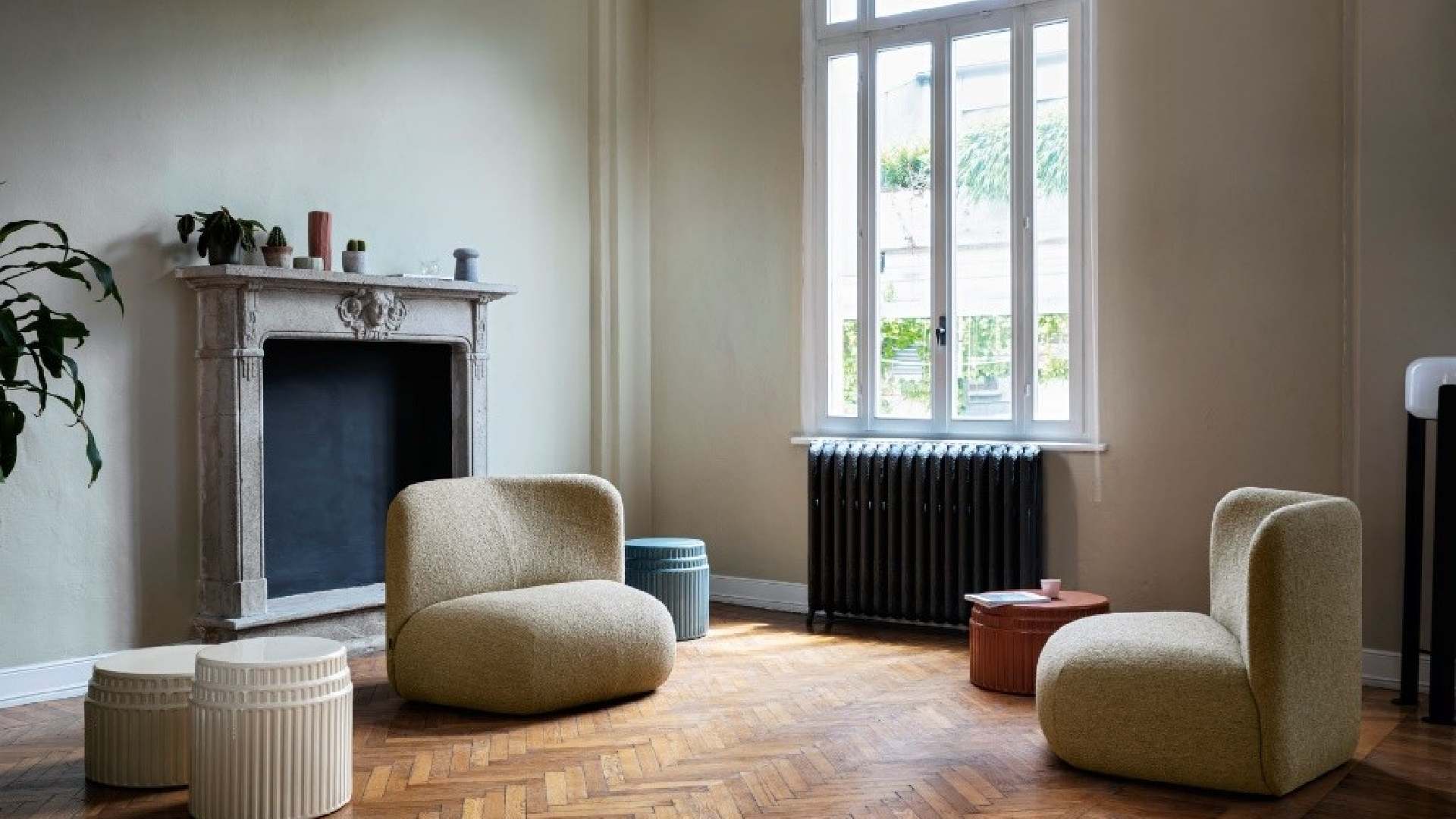
Western Furniture is set to captivate design lovers across the UAE with an exclusive Super Sale that brings Italian luxury within reach. For a limited time, the brand is unveiling extraordinary deals on some of Italy’s most prestigious furniture labels, giving furniture lovers the perfect opportunity to refresh their homes with elegance and modern sophistication. From November 28 to December 2, shoppers can explore an exclusive range of designer pieces—each intended to elevate homes with modern elegance, ultimate comfort, and timeless style.
This unmissable event features exquisite pieces from Tonin Casa, Tomasella, Miniforms, Calligaris and Natuzzi editions — each a true reflection of Italian design excellence and artisanal craftsmanship.
Discover timeless elegance and contemporary innovation with these standout pieces:
Calligaris
FLUFF BED FABRIC


Fluff Bed: A luxurious bed in ecru fabric with a matt black frame, measuring 180 x 200 cm. The Fluff Bed combines comfort and style, making it a perfect addition to any bedroom.
SIPARIO MIRROR GLASS GMG – GREY MIRROR:

Sipario is a mirror with a poetic design that combines curved glass and flat glass. Simulating the curtain of a theatre, the mirror is characterized by two parts, a reflective one and one that breaks down the image, symbolizing the contrast between what is shown and what remains hidden.
UNIVERSAL BUFFET CERAMIC
Universal Buffet is versatile buffet with a calacatta black marble ceramic top and matt bronze wood frame, measuring 241 x 50 x 79 cm. The Universal Buffet offers ample storage space while adding a touch of luxury to any room.

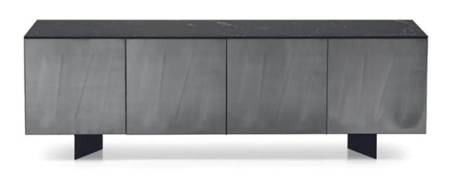
TWINS DINING TABLE CERAMIC and VANILLA DINING CHAIR FABRIC


Twins Dining Table: A sleek, contemporary dining table featuring a bronze glass top and a matte black metal frame, sized 249 x 119 x 75 cm. Paired with the Vanilla Dining Chair in fabric, it creates a perfectly balanced and stylish dining area, ideal for those who value modern aesthetics and practical elegance.
CAMEO DINING TABLE WOOD
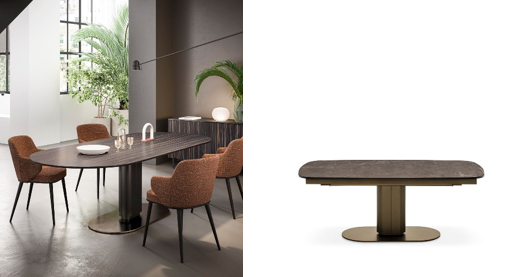
Cameo Dining Table: A true statement piece, the Cameo Dining Table features a striking calacatta black marble ceramic top complemented by a matte bronze metal frame. Its extendable design adapts effortlessly to your space,
Pair it with the Glen Dining Chair in fabric to create a stunning, cohesive dining area.
The Glen Chair by Gino Carollo is a versatile option, with clean lines and an oval-profile frame in wood or metal, paired with plush upholstery in a wide range of colors.

Tomasella
ARMADI WARDROBE

The exquisite Armadio wardrobe by Tomasella seamlessly ensues impeccable craftsmanship and contemporary aesthetics, providing a haven for your most cherished belongings.
PORTICELLO BED

a luxurious bed featuring a dual headboard design — a soft, upholstered fabric center framed by sleek, dark wood. The space is accented with marble-effect panels, metallic lighting fixtures, and muted pastel tones, creating a serene, high-end atmosphere perfect for modern living.
Tonin Casa
Ablos Table
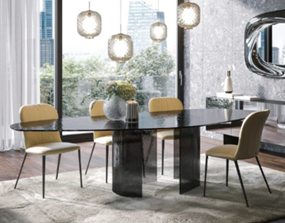
Ablos is an expression of lightness and movement, a perfect balance between strength and delicacy. Its base, formed by two curved sheets of hammered glass, supports an asymmetrical top, also in hammered glass; the play of reflections when light hits the glass creates a vibrant, ethereal atmosphere.
Victory Table
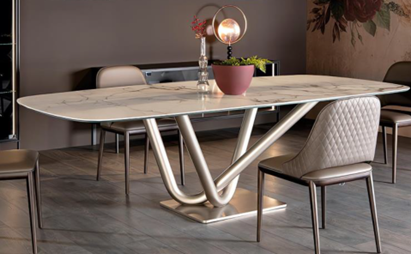
Featuring a striking marble top paired with a distinctive sculptural base, Victory transforms any dining space into a statement of elegance and sophistication. Designed to blend artistry with functionality, this table is more than a piece of furniture—it’s a centrepiece that elevates the style and character of every room it graces.
Miniforms
Plauto table
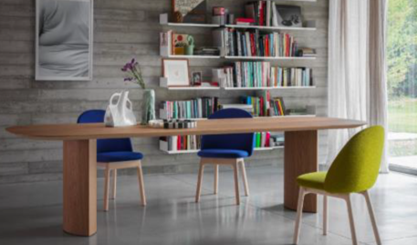
Named after the Roman playwright, Plauto draws on the past to inspire the future. Crafted from a single piece of wood, it explores a variety of shapes—flat, curved, pointed—showcasing the material’s natural beauty.
Inspired by monolithic structures, the table features a sculpted top that seems to float above its “leaf-cut” legs, creating a perfect balance of form and weight. Elegant, simple, and striking, Plauto is a statement piece for any space.
Soda coffee table
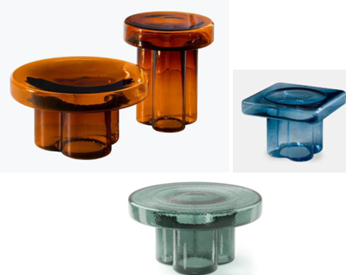
Soda coffee table Crafted from a single piece of Murano blown glass, it features three petal-like stems that support its tabletop. Its hammered, translucent surface highlights the purity and elegance of the glass, creating mesmerizing plays of light and shadow. A perfect blend of artistry and craftsmanship, Soda by Yiannis Ghikas transforms a simple material into a striking centrepiece for any living room.
Natuzzi editions sofas
Adrenalina is a masterpiece of comfort combined with solid design, featuring a blend of generous proportions and statement tailoring. The wooden base gives this sofa a totally refined style and a contemporary modernist look. With its simple and elegant character, this piece will be the highlight of any space.
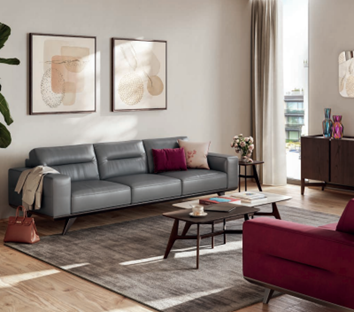
The Speranza Sofa by Natuzzi Editions combines inviting design with exceptional comfort, creating the perfect spot to relax, reset, and embrace new beginnings. A timeless piece crafted to elevate your living space with warmth and elegance.

The Ernesto by Natuzzi Editions designed for real living, offers deep, generous seating — including an extra-large option — crafted for everyday comfort. Its open-base design adds a sense of lightness and modern elegance, making it a perfect fit for any contemporary interior.
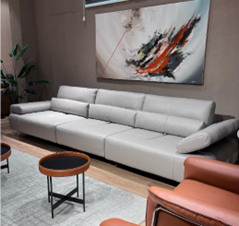
Toledo by Natuzzi Editions brings refined Italian craftsmanship to modern living spaces, featuring luxurious Italian leather seating designed for homeowners who value exceptional quality. Available in multiple configurations — including options with elegant metal-finished legs
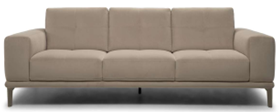
Whether you’re refreshing your interiors or searching for a standout piece, this sale offers the perfect opportunity to add a touch of Italian luxury to your home at exceptional value.
Hospitality
Experience a Daily Treat at Authors’ Lounge: Fresh Croissant and Unlimited Coffee
Authors’ Lounge at voco Bonnington Dubai has just launched a delightful daily offer that provides an elevated café experience that’s both practical and easy to fit into any routine. Guests and visitors can now enjoy a warm, freshly baked croissant served with unlimited pours of their preferred coffee for just AED 65 per person.
The lounge is known for its welcoming atmosphere, spacious seating, and steady, reliable service. Fresh bakes and a well-rounded beverage selection make it a natural choice for quick meetings, relaxed catchups, or quiet time with a book. The new offer brings together value, comfort, and ease, making it an effortless pick for both regular guests and visitors.

What you can look forward to:
- A daily selection of warm, artisanal bakes
- Unlimited refills of premium coffee with your croissant
- A chic and calming café atmosphere ideal for meetings, musings, or me-time
- The option to linger longer with access to all-day dining
Author’s Lounge remains a steady favourite for those who enjoy calm spaces and good flavours. In line with voco Bonnington Dubai’s approach to warm hospitality and quality dining, the lounge focuses on thoughtful plates, attentive service, and an inviting atmosphere that appeals to both hotel guests and the wider JLT community.
-

 Tech News1 year ago
Tech News1 year agoDenodo Bolsters Executive Team by Hiring Christophe Culine as its Chief Revenue Officer
-

 VAR8 months ago
VAR8 months agoMicrosoft Launches New Surface Copilot+ PCs for Business
-

 Tech Interviews2 years ago
Tech Interviews2 years agoNavigating the Cybersecurity Landscape in Hybrid Work Environments
-

 Tech News5 months ago
Tech News5 months agoNothing Launches flagship Nothing Phone (3) and Headphone (1) in theme with the Iconic Museum of the Future in Dubai
-

 Tech News2 years ago
Tech News2 years agoBrighton College Abu Dhabi and Brighton College Al Ain Donate 954 IT Devices in Support of ‘Donate Your Own Device’ Campaign
-

 Editorial1 year ago
Editorial1 year agoCelebrating UAE National Day: A Legacy of Leadership and Technological Innovation
-

 VAR1 year ago
VAR1 year agoSamsung Galaxy Z Fold6 vs Google Pixel 9 Pro Fold: Clash Of The Folding Phenoms
-

 Cover Story9 months ago
Cover Story9 months agoUnifonic Leading the Future of AI-Driven Customer Engagement













